
As a traveler with an insatiable thirst for history and culture, I had always dreamt of wandering through the corridors of time, discovering hidden treasures that whisper stories of ancient civilizations. The Konark Sun Temple, nestled along the coastline of Odisha, India, promised to be one such treasure trove that would ignite my imagination and quench my curiosity.

Stepping onto the sacred grounds of the Konark Sun Temple, I was immediately transported back in time. The whispers of centuries seemed to echo in the breeze, as if the temple walls were eager to share their tales of glory and devotion. The temple, dedicated to the sun god Surya, stands as an architectural masterpiece, a silent witness to the passage of ages.
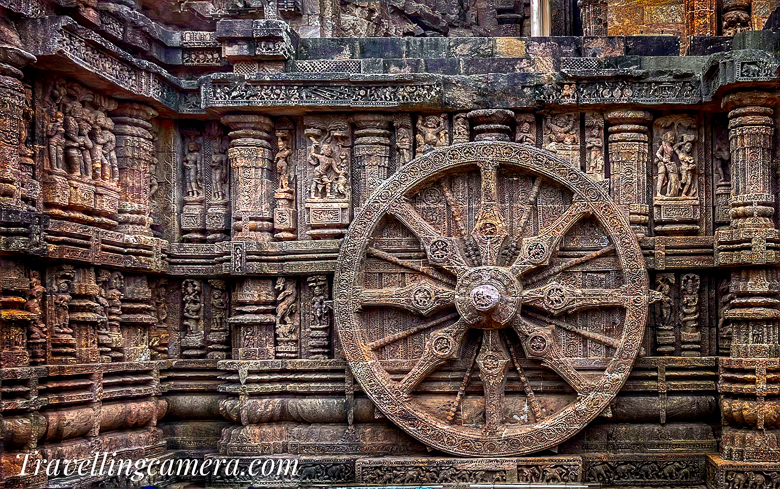
As I traced my fingers along the intricate carvings that adorned every surface, I marvelled at the devotion and craftsmanship that went into creating this awe-inspiring edifice. The sculptures seemed to come to life, depicting scenes from Hindu epics that told stories of heroism, love, and divine interventions. The Natya Mandapa, once a stage for dance performances, still resonated with the rhythm of ancient melodies.

One cannot talk about the Konark Sun Temple without mentioning its famed chariot-shaped design. The twelve wheels, meticulously carved to resemble the sun's path, fascinated me beyond words. As the sun's rays cast enchanting shadows on the intricate stone wheels, I stood in awe of the ancient architects who had harnessed light and stone to create a celestial spectacle.
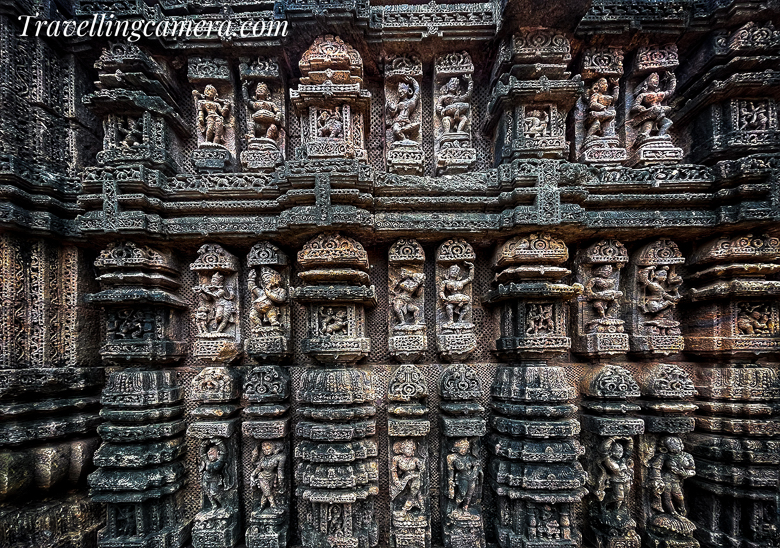
While time had been unkind to this architectural marvel, the dedication of restoration experts was evident in every corner. Their meticulous efforts to preserve the temple's beauty were humbling, reminding me of the collective responsibility we bear to safeguard our heritage.

As the sun began its descent, casting a golden hue on the temple, I found a quiet spot to reflect. The temple's history and the devotion of its creators resonated deeply within me. It was a reminder that human aspirations and creativity have no bounds, and that the pursuit of beauty and spirituality transcends generations.

The temple was built during the reign of King Narasimhadeva I of the Eastern Ganga Dynasty in the 13th century.King Narasimhadeva I, a notable ruler of the Eastern Ganga Dynasty, left an indelible mark on the history of Odisha. His reign, spanning from 1238 to 1264 CE, was characterized by remarkable accomplishments in art, architecture, and governance. Under his patronage, the awe-inspiring Konark Sun Temple, a testament to architectural genius, came into being. King Narasimhadeva's vision extended beyond monuments; he fostered an environment where culture and learning flourished. His reign saw the flourishing of literature, poetry, and artistic expression, contributing to the rich cultural heritage of the region. His legacy continues to shine through the awe-inspiring structures and cultural advancements that were born during his rule, leaving an enduring impression on the pages of history.
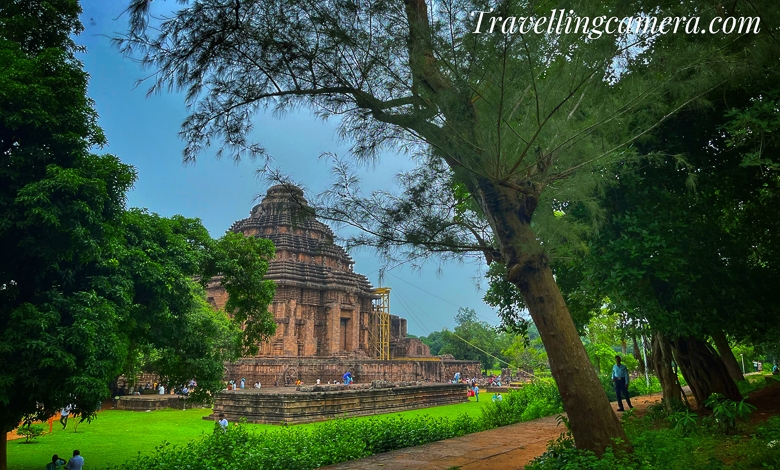
The Konark Sun Temple is an impressive architectural marvel with significant dimensions. Here are some approximate measurements:
Height: The main sanctum of the temple, including the shikhara (tower), is believed to have been around 70 meters (230 feet) in height. However, this towering structure is now in ruins, and the surviving part is much shorter.
Width: The platform upon which the temple stands is about 30 meters (100 feet) in width.
Length: The temple complex, including the Natya Mandapa (Dance Hall) and the Jagamohana (Assembly Hall), extends to a length of around 229 meters (750 feet).
Wheels of the Chariot: The wheels of the chariot-shaped temple are intricately carved and are about 3 meters (10 feet) in diameter.
It's important to note that the temple has suffered significant damage and deterioration over the centuries. While these measurements provide a general idea of the temple's scale, the actual dimensions may vary due to the effects of time and restoration efforts.

The Konark Sun Temple is adorned with a multitude of intricate sculptures that narrate myths, legends, and aspects of daily life during its era. Here are some of the key sculptures and themes you can find at the temple:
Chariot Wheels: The most iconic and recognizable feature of the temple is the chariot wheels. The twelve intricately carved wheels represent the sun's journey across the sky, each spoke marked with different stages of the day.
Kalinga War Scene: Depicting a battle scene from the Mahabharata, this sculpture showcases warriors, elephants, and horses engaged in fierce combat, capturing the energy and intensity of warfare.
Apsaras (Celestial Dancers): The temple is adorned with beautiful apsara sculptures, representing celestial nymphs in various graceful poses, symbolizing the celebration of life and artistic expression.
Dancing Figures: The Natya Mandapa (Dance Hall) is adorned with sculptures of dancers in various poses, capturing the elegance and movement of dance forms from the era.
Ravana Lifting Kailasa: This iconic sculpture portrays the demon king Ravana lifting Mount Kailasa, a powerful scene from Hindu mythology. The intricacy of this sculpture is noteworthy.
Linga Images: The temple complex also features various linga images, representing Lord Shiva. These images emphasize the temple's sanctity and its significance as a place of worship.
Yakshis and Naginis: The temple features sculptures of female figures known as yakshis and snake-like entities called naginis. These sculptures symbolize fertility, protection, and the divine feminine.
Animals and Birds: The temple is adorned with intricate sculptures of animals, birds, and mythical creatures. These sculptures provide insights into the fauna of the region and the artistic imagination of the time.
Kinnaras and Gandharvas: Sculptures of celestial beings, such as kinnaras (half-human, half-bird creatures) and gandharvas (celestial musicians), add a touch of mystique to the temple's artistic narrative.
Erotic Sculptures: Like many ancient Indian temples, the Konark Sun Temple features some erotic sculptures that are believed to represent aspects of human life and fertility.
These sculptures collectively create a captivating narrative that encompasses various aspects of mythology, daily life, spirituality, and artistic expression, making a visit to the Konark Sun Temple an enriching experience for history enthusiasts and art lovers alike.
The Lion-Subjugating Elephant sculptures depict a powerful symbolism. The lions symbolize strength and courage, while the elephants represent royalty and might. The positioning of the lions over the elephants signifies the dominance of courage and strength over power and authority. This motif is often interpreted as an allegorical representation of the victory of the Sun god Surya's divine power over the might of earthly rulers.

The restoration of the Konark Sun Temple was a multi-phase effort that aimed to preserve and revitalize this architectural marvel. One significant phase of restoration occurred during the British colonial period in the late 19th century under the leadership of Major R. B. Smith. He played a crucial role in stabilizing the temple's structure and preventing further decay.
Another noteworthy phase of restoration took place in the mid-20th century, led by the Archaeological Survey of India (ASI). Renowned conservationist M. N. Deshpande was instrumental in the restoration work during this period. His meticulous efforts focused on removing the accumulated sand, conserving the sculptures, and stabilizing the structure. His work, along with the ASI's continuous efforts, significantly contributed to the preservation of the temple's intricate artwork and structural integrity.
These restoration efforts involved a collaborative approach, including experts in archaeology, art history, conservation, and engineering. Their dedication and expertise breathed new life into the Konark Sun Temple, ensuring that its grandeur and historical significance continue to be appreciated by generations to come.

To reach Konark from Puri, you have a few transportation options. Konark is located around 35 kilometers (22 miles) northeast of Puri. Here's how you can get there:
By Road:
The most convenient way to travel from Puri to Konark is by road. You can hire a taxi or an auto-rickshaw from Puri to take you to Konark.
Alternatively, you can also consider renting a car for the day, which gives you the flexibility to explore at your own pace.
By Bus:
There are public buses that operate between Puri and Konark. You can inquire about the bus timings and routes at the Puri Bus Stand.
Keep in mind that public buses might have varying levels of comfort and frequency, so it's a good idea to check the schedule in advance.
By Train:
While there is no direct train between Puri and Konark, you can take a train from Puri to the nearest railhead, which is at the town of Puri.
From there, you can hire local transportation, like a taxi or an auto-rickshaw, to reach the Konark Sun Temple.
Guided Tours:
Many tour operators in Puri offer guided tours to Konark, often as part of a day trip that includes other nearby attractions as well. This option can provide a hassle-free way to visit Konark with the added benefit of having a guide.
Shared Jeeps/Sumos:
Shared jeeps or Sumos are a common mode of transportation in this region. You might find these vehicles traveling between Puri and Konark. However, availability and comfort levels can vary.
Rickshaws and Bicycles:
If you're feeling adventurous, you can rent a bicycle or take a cycle rickshaw to explore the area at a slower pace.
Before you embark on your journey, make sure to check the current transportation options, schedules, and fares. Local transportation options can sometimes change, so it's a good idea to ask at your hotel or local travel agencies for the most up-to-date information.
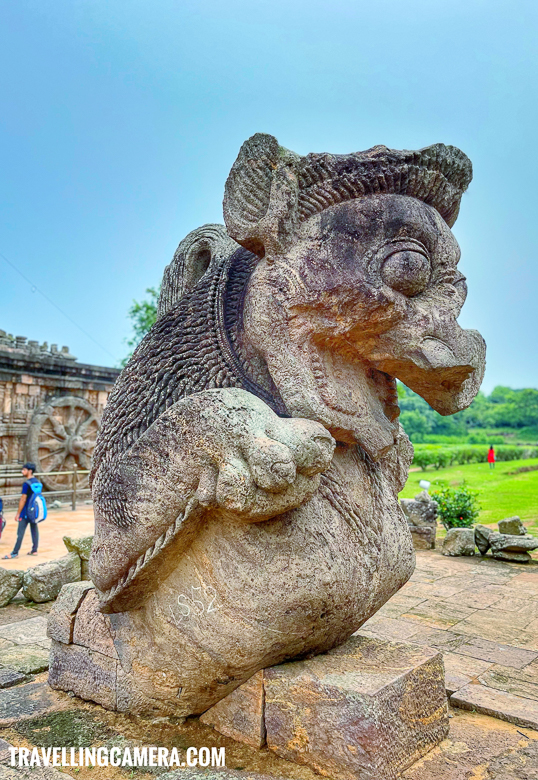
It's definitely possible to do a day trip to Konark from both Puri and Bhubaneswar. Konark is a popular tourist destination and is easily accessible from these cities. Here's how you can plan a day trip:
Konark From Puri:
Puri is the closest major city to Konark. The distance between Puri and Konark is around 35 kilometers (22 miles), and the journey usually takes about 1 to 1.5 hours by road.
You can hire a taxi, take a local bus, or consider a shared vehicle to reach Konark.
Leaving early in the morning from Puri will give you enough time to explore the Konark Sun Temple and its surroundings before heading back in the evening.
Konark From Bhubaneswar:
Bhubaneswar is the capital city of Odisha and is located at a greater distance from Konark, approximately 65 kilometers (40 miles) away. The journey usually takes around 2 to 2.5 hours by road.
Similar to Puri, you can hire a taxi or consider renting a car to travel to Konark.
If you're short on time, you might consider booking a guided day tour from Bhubaneswar that includes transportation and a knowledgeable guide to enhance your experience.
Both Puri and Bhubaneswar offer ample transportation options for day trips to Konark. Keep in mind that while it's possible to visit the main attractions of Konark in a day, spending more time in the area would allow you to explore the surrounding villages, crafts, and local culture more thoroughly. Always check the road conditions, travel times, and any entry fees to the attractions before embarking on your day trip.

The Konark Sun Temple was designated as a UNESCO World Heritage Site in 1984. Its inclusion on the list recognizes its cultural significance, architectural excellence, and the historical value it holds as one of India's most iconic temples. This status also emphasizes the importance of preserving and protecting the temple for future generations to appreciate and learn from its rich history and artistic legacy.

The Konark Sun Temple complex consists of several structures, each contributing to its architectural and historical significance. Here are the different temples and structures you can find within the compound:
Main Temple (Deul): This is the central and most iconic structure of the complex. It was designed in the shape of a colossal chariot with 24 intricately carved wheels, symbolizing the sun god Surya's journey across the sky. The main temple is dedicated to Surya and features a sanctum sanctorum where the deity was once enshrined.
Jagamohana (Assembly Hall): This structure lies immediately in front of the main temple. It was intended to be the audience hall for religious gatherings and rituals. The Jagamohana is built on a high platform and showcases ornate carvings similar to the main temple.
Natya Mandapa (Dance Hall): Located ahead of the Jagamohana, this open-air hall was once used for dance performances and other cultural events. It is characterized by exquisite sculptures of dancers and musicians, reflecting the artistic and cultural vibrancy of its time.
Nata Mandira: Situated between the Natya Mandapa and the main temple, this smaller shrine was likely used for rituals or offerings. It features depictions of dancers, musicians, and mythological scenes on its exterior walls.
Other Structures: In addition to the main temples and halls, you can find smaller shrines, platforms, and remnants of other structures within the complex. These elements contribute to the overall layout and historical context of the temple complex.
The Konark Sun Temple complex is a treasure trove of architectural brilliance and artistic expression. Its various structures, each with its own unique significance, collectively create an immersive experience that transports visitors to an era of spiritual devotion and cultural grandeur.

Ticket price at Konark Sun Temple:
Indian Citizens: Entry Fee: ₹40 per person
Video Camera Fee: ₹100 (if you plan to use a video camera)
Foreign Tourists:vEntry Fee: ₹600 per person
Video Camera Fee: ₹1000 (if you plan to use a video camera)
Please note that these ticket prices might change over time, and it's always a good idea to verify the current prices before your visit. Additionally, sometimes there are special rates for students, senior citizens, and groups. These rates do not include the Light and Sound Show if you choose to attend it, as the show often has a separate ticket price. It's advisable to check with the official sources or the ticket counters at the site for the most accurate and up-to-date information on ticket prices and any available discounts. Currently Light & Sound show ticket for Indians is 50 Rs and one person standing in queue can only get 6 tickets. Queues are very badly managed there and this is one feedback I registered in the office. Hope they take it seriously and improve ticketing counter experience.

The weather in Konark, like many places, varies depending on the season. Here's a general overview of the weather you can expect in Konark throughout the year:
Winter (November to February):
Winter is considered the most pleasant time to visit Konark. The weather is relatively cool and comfortable, with temperatures ranging from around 15°C to 25°C (59°F to 77°F). It's an excellent time for sightseeing and exploring the outdoor attractions without the intense heat.
Spring (March to May):
Spring marks the transition from winter to summer. During this period, temperatures gradually rise, ranging from around 20°C to 35°C (68°F to 95°F). It can still be a good time to visit, but as you move towards May, the heat becomes more noticeable.
Summer (June to August):
Summer in Konark can be quite hot and humid. Temperatures can soar, often reaching up to 40°C (104°F) or more. This is the monsoon season, so you can also expect heavy rainfall, especially in July and August. While the lush surroundings might be at their greenest during this time, the heat and rain can make outdoor activities less enjoyable.
Post-Monsoon (September to October):
After the monsoon, the weather starts to become more comfortable. The post-monsoon period is a transition to winter, and temperatures begin to cool down. September and October can be pleasant months to visit, with temperatures ranging from around 25°C to 30°C (77°F to 86°F).

It's important to note that weather conditions can sometimes be unpredictable, and it's a good idea to check the local weather forecast before your trip. If you're planning to visit Konark, the winter and post-monsoon months (November to February and September to October) are generally recommended for the most comfortable and enjoyable experience.
My journey to the Konark Sun Temple was not just a physical exploration; it was a journey of the heart and soul. It was a testament to the power of human ingenuity, a tribute to ancient wisdom, and a communion with the forces that shape our world. As I left the temple, its silhouette etched in my memory, I carried with me the echoes of its stories, a newfound reverence for the past, and a promise to cherish and protect our cultural treasures for generations to come.






















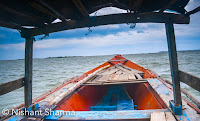

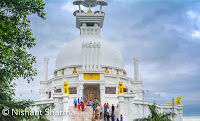




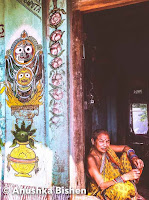

.jpg)
Comments